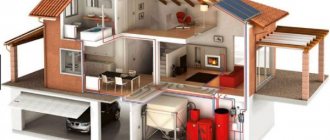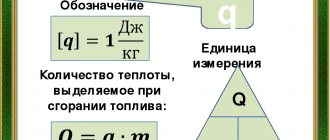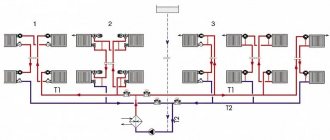View a person's account without registration
In the last paragraph, we were just looking for ordinary pictures on a similar topic, but you can look at photos of certain people, for this we also use the official website, and not the application.
If you know the address of the page or the username of the user whose photos you want to see, then good, you can go to it right now using any browser. If you don’t know the address of the page, but the person is famous, then you can also search for his photos using tags. For example, in order to find photos of Buzova on Instagram, I entered https://www.instagram.com/explore/tags/buzova/ in the address bar of the browser.
If you know a person’s login on Insta, then in order to see his photos you need to go to the following address:
https://www.instagram.com/user-login/
For example, to see photos of Ronaldo, I entered in the browser address bar
https://www.instagram.com/cristiano/.
Thus, you can look at photos on any topic and any person who posted photos on Instagram, if his account is not private.
Instagram is one of the most popular social networks, which is actively used by ordinary users and media personalities: show business stars, politicians, public figures and representatives of the arts - artists, aspiring musicians, writers and others.
In just a few years, the Instagram platform has accumulated more than 800 million active unique users, and this figure is growing daily.
Popular brands and stores have long established their own pages where you can view their assortment and even order the product you like. And you no longer need to check tabloid feeds to find news about your favorite singers, actors and other stars - they themselves willingly share moments of their lives and communicate with fans.
Special attention should be paid to public community pages. They specialize in certain topics that may be of interest to users, for example, accounts with funny videos, tips on weight loss, motivation, psychology and time management, local communities that unite residents of individual cities, university students and employees of different companies
read our material.
And although the popularity of Instagram has just gone through the roof lately, there are still people (and there are many of them) who are delaying the moment of registering on the resource, or are not going to do it at all. This does not mean that they are not interested in the social network itself, or more precisely, the content that is published on it. Authorization opens up a lot of opportunities for users: likes, subscriptions, commenting, and more. But in order to simply follow the page you like, you don’t have to register. It’s enough just to go to an interesting account, view posts, add some links to bookmarks and take screenshots. Of course, provided that the user's profile is open and available for viewing.
In this article, we will look in detail at how to search for people on Instagram without registration, and what needs to be done for this.
Why is roof attic insulation necessary?
Particular attention should be paid to the thermal insulation of the attic floor, the choice of insulation for the roof, films for waterproofing and vapor barrier of the insulation layer, not only for reasons of reducing the cost of heating the house. As you know, warm air, being lighter than cold air, always rises, so its temperature under the ceiling is higher than at the average level of the room
In addition, the moisture content of warm air, and, consequently, the dew point (the temperature at which condensation can form on the ceiling surface) is higher than that of cold air.
It follows from this that at the same relative air humidity, for example, jв = 55% and at air temperatures tв = 20°C and tв = 22°C, condensation can fall on the surface of the ceiling, the temperature of which is lower than or equal to the dew point temperature, namely tв = 10.7°C in the first case and tв = 12.5°C in the second
Therefore, it is important to properly insulate the attic floor, to properly waterproof and vapor barrier the roof attic insulation
Insulation of the roof attic with modern insulation should prevent the ceiling surface temperature from decreasing below the dew point. Without insulation of the attic, wet spots will inevitably form on the ceiling, windows and adjacent structures, which not only worsen the appearance of the room, but also cause the development of mold and mildew, which are very difficult to get rid of. In this regard, more stringent requirements are imposed on the thermal insulation of the roof attic than on the thermal insulation of walls or floor insulation.
Specific heating characteristic of a building - what is it and how is it calculated
The specific heating characteristic of a building is a very important technical parameter. Its calculation is necessary to carry out design and construction work; in addition, knowledge of this parameter will not hurt the consumer, since it affects the amount of payment for thermal energy. Below we will look at what the specific heating characteristic is and how it is calculated.
Thermal imaging data of a multi-storey building
The concept of specific thermal characteristics
Before getting acquainted with the calculations, let's define the basic terms. So, the specific thermal characteristic of a building for heating is the value of the largest heat flow that is necessary to heat the house. When calculating this parameter, the temperature delta, i.e. The difference between room and street temperatures is usually taken as one degree.
In essence, this indicator determines the energy efficiency of the building.
Average parameters are determined by regulatory documentation, such as:
- Construction rules and recommendations;
- SNiPs, etc.
Any deviation from the designated standards in any direction allows you to get an idea of the energy efficiency of the heating system. The calculation of the parameter is carried out according to SNiP and other current methods.
Wall insulation allows you to reduce energy costs for heating
Calculation and standard indicators
Estimated indicators can be obtained using the following formula:
qzd= + +n1* + n2), where:
| qzd ,W/(m3оС) | The amount of heat lost by one cubic meter of a building with a temperature difference of 1 degree. |
| F0, m2 | Heated area of the building |
| Fst., Fok., Fpol., Fpok., m2 | Area of walls (external), windows, floors, coverings. |
| Rst., Rok., Rpol., Rok., | Heat transfer resistance of surfaces. |
| n | A coefficient that changes depending on the location of the room relative to the street. |
It must be said that this formula is not the only one. The specific heating characteristics of buildings can be determined according to local building codes, as well as certain methods of self-regulatory organizations, etc.
Thermal imaging data of a private house
Factual data
The calculation of the actual thermal characteristics is carried out using the following formula
This formula is based on actual parameters:
| Q | Fuel consumption throughout the year |
| Z | Heating season duration |
| tint | Average indoor temperature |
| text | Average outdoor temperature |
| qfact | Actual specific thermal heating characteristic of the building |
It should be noted that this equation is simple, as a result of which it is often used in calculations. However, it has a serious drawback that affects the accuracy of the resulting calculations. Namely, it takes into account the temperature difference in the premises of the building.
To get more accurate data with your own hands, you can use calculations to determine heat consumption by:
- Indicators of heat loss through various building structures;
- Project documentation.
- Aggregated indicators.
Heat loss diagram
Self-regulatory organizations usually use their own methods.
They take into account the following parameters:
- Architectural and planning data;
- Year the house was built;
- Correction factors for outdoor air temperature during the heating season.
In addition, the actual specific heating characteristics of residential buildings should be determined taking into account heat losses in pipelines passing through “cold” rooms, as well as the cost of air conditioning and ventilation. These coefficients can be found in special SNiP tables.
This is, perhaps, all the basic instructions for determining the specific thermal parameter.
Conclusion
The specific heating characteristics of buildings is an important parameter that depends on a number of factors. As we found out, you can determine it yourself, which in the future will allow you to calculate energy costs for heating in the house.
You can get some additional information on this topic from the video in this article.
Conclusion
We have provided formulas for independently calculating the necessary indicators; heating engineering specialists themselves use these calculations. We hope that the article will be useful to you, but if something doesn’t work out for you, then don’t be upset, contact professionals, the price for such calculations is low and takes several hours, including measurements. And in the video presented in this article you will find additional information on this topic.
The specific thermal characteristic of a building is one of the important technical parameters. It must be contained in the energy passport. Calculation of this data is necessary for design and construction work. Knowledge of such characteristics is also necessary for the consumer of thermal energy, since they significantly affect the amount of payment.
Accurate heat load calculations
Thermal conductivity value and heat transfer resistance for building materials
But still, this calculation of the optimal heat load for heating does not provide the required calculation accuracy. It does not take into account the most important parameter - the characteristics of the building. The main one is the heat transfer resistance of the material used to manufacture individual elements of the house - walls, windows, ceilings and floors. They determine the degree of conservation of thermal energy received from the coolant of the heating system.
What is heat transfer resistance (R)? This is the reciprocal of thermal conductivity (λ) - the ability of the material structure to transmit thermal energy. Those. the higher the thermal conductivity value, the higher the heat losses. This value cannot be used to calculate the annual heating load, since it does not take into account the thickness of the material (d). Therefore, experts use the heat transfer resistance parameter, which is calculated using the following formula:
Calculation of walls and windows
Heat transfer resistance of walls of residential buildings
There are standardized values for the heat transfer resistance of walls, which directly depend on the region where the house is located.
In contrast to the enlarged calculation of the heating load, you first need to calculate the heat transfer resistance for the external walls, windows, ground floor floor and attic. Let's take the following characteristics of the house as a basis:
- Wall area – 280 m². It includes windows - 40 m²;
- The material used for making the walls is solid brick (λ=0.56). The thickness of the external walls is 0.36 m. Based on this, we calculate the TV transmission resistance - R = 0.36/0.56 = 0.64 m²*C/W;
- To improve the thermal insulation properties, external insulation was installed - polystyrene foam 100 mm thick. For him λ=0.036. Accordingly, R=0.1/0.036= 2.72 m²*C/W;
- The overall R value for external walls is 0.64 + 2.72 = 3.36 which is a very good indicator of the thermal insulation of a house;
- The heat transfer resistance of windows is 0.75 m²*C/W (double glazing filled with argon).
In fact, heat losses through the walls will be:
(1/3.36)*240+(1/0.75)*40= 124 W at a temperature difference of 1°C
We will take the same temperature indicators as for the aggregate calculation of the heating load +22°C indoors and -15°C outdoors. Further calculations must be made using the following formula:
Ventilation calculation
Then it is necessary to calculate the losses through ventilation. The total air volume in the building is 480 m³. Moreover, its density is approximately 1.24 kg/m³. Those. its mass is 595 kg. On average, air is renewed five times per day (24 hours). In this case, to calculate the maximum hourly heating load, you need to calculate the heat losses for ventilation:
(480*40*5)/24= 4000 kJ or 1.11 kW/hour
By summing up all the obtained indicators, you can find the total heat loss of the house:
This way the exact maximum heating load is determined. The resulting value directly depends on the outside temperature. Therefore, to calculate the annual load on the heating system, changing weather conditions must be taken into account. If the average temperature during the heating season is -7°C, then the total heating load will be equal to:
(124*(22+7)+((480*(22+7)*5)/24))/3600)*24*150(heating season days)=15843 kW
By changing the temperature values, you can make an accurate calculation of the heat load for any heating system.
To the results obtained, you need to add the value of heat losses through the roof and floor. This can be done by a correction factor of 1.2 - 6.07 * 1.2 = 7.3 kW/h.
The resulting value indicates the actual energy costs during system operation. There are several ways to regulate the heating load. The most effective of them is reducing the temperature in rooms where there is no constant presence of residents. This can be done using thermostats and installed temperature sensors. But at the same time, a two-pipe heating system must be installed in the building.
To calculate the exact value of heat losses, you can use the specialized Valtec program. The video shows an example of working with it.
Anatoly Konevetsky, Crimea, Yalta
Anatoly Konevetsky, Crimea, Yalta
Dear Olga! Sorry to contact you again. According to your formulas, I get an unimaginable heat load: Kir=0.01*(2*9.8*21.6*(1-0.83)+12.25)=0.84 Qot=1.626* 25600*0.37*((22-(-6))*1.84*0.000001=0.793 Gcal/hour According to the aggregated formula given above, it turns out to be only 0.149 Gcal/hour. I can’t understand what’s the matter? Please explain! Sorry for disturbing you. Anatoly.
Anatoly Konevetsky, Crimea, Yalta
Eventually
As you can see, calculating the heating capacity comes down to calculating the total value of the four above elements.
Not everyone can determine the required capacity of the working fluid in a system with mathematical accuracy. Therefore, not wanting to perform the calculation, some users act as follows. To begin with, fill the system to approximately 90%, after which the functionality is checked. Next, the accumulated air is released and filling continues.
During operation of the heating system, a natural decline in the coolant level occurs as a result of convection processes. In this case, there is a loss of power and productivity of the boiler. This implies the need to have a reserve tank with working fluid, from where it will be possible to monitor the loss of coolant and, if necessary, replenish it.
Energy efficiency class
Specific heat characteristics serve as the basis for obtaining such an indicator as the energy efficiency class of a house. In recent years, the energy efficiency class must be determined mandatory for residential multi-apartment buildings.
Signs on the house can indicate its energy efficiency class
This parameter is determined based on the following data:
- Deviation of actual indicators and calculated and normative data. Moreover, the former can be obtained both by calculation and by practical means, i.e. using thermal imaging examination.
- Climatic features of the area.
- Regulatory data, which should include information on heating costs, as well as ventilation and air conditioning.
- Building type.
- Technical characteristics of the building materials used.
Each class has certain energy consumption values throughout the year. The energy efficiency class must be noted in the energy passport of the house.
What are the calculations?
The specific heating characteristic is determined by different methods:
- based on calculation and standard parameters (using formulas and tables);
- based on factual data;
- individually developed methods of self-regulating organizations, where the year of construction of the building and design features are also taken into account.
When calculating actual indicators, pay attention to heat loss in pipelines that pass through unheated areas, ventilation (air conditioning) losses.
At the same time, when determining the specific heating characteristics of a building, SNiP “Ventilation, heating and air conditioning” will become a reference book. Thermal imaging examination will help to most accurately determine energy efficiency indicators.
What is this indicator
The specific heating characteristic of buildings shows by its value the maximum heat flow for the heating needs of a building under conditions of a difference between external and internal temperatures of one degree Celsius.
The value itself is an important indicator of the energy efficiency of a building; its deviations from standard values determine the level of energy efficiency.
Often, the specific heating characteristics of residential buildings are calculated according to SNiP “Thermal Protection of Buildings” standards, as well as building codes.
Required SNiP
Methodology for calculating self-regulatory organizations
The specific heating characteristics of residential buildings are calculated according to the formula:
Where:
- a – equals to 1.66 kcal/m2 hµC, 83 for n=6 – for buildings that were commissioned before 1958;
- a – equal to 1.72 kcal/m2.5 hµC for n=6 – for buildings introduced into the housing stock after 1985;
- V is the volume of the building, measured in cubic meters;
- µ - correction factor for outside air temperature, ranges from 0.8 to 2.5.
This equation is an approximation that was obtained through processing statistical data. As you can see, for buildings that were commissioned as housing before 1958 and after 1985, the same value n=6 is taken. Note that in the second case the value is greater than in the first.
Stalin building
Many experts prefer to take the values found in building codes.
Actual figure
The actual specific thermal heating characteristic of the building is determined by the following formula:
Where:
- Q – amount for actual heat consumption for ventilation and heating needs for the entire heating season; (See also the article When the heating season ends.)
- tВ – internal temperature;
- tH – outside temperature;
- zf – actual duration of the heating period in the base year, measured in days;
- knm – coefficient indicating heat loss by pipelines located in rooms that are not heated. Usually 1.05 is accepted, but depending on the case it can be less, taken from SNiP “Ventilation, heating and air conditioning”.
SNiP for calculations
The advantage of this method is that it is easy to determine the values of the parameters that make up the formula; instructions for determining them are not required.
The disadvantage is that the equation does not take into account the heterogeneity of the internal temperatures of air masses inside rooms for different purposes throughout the building. If there is no separate accounting of heat consumption, then it can be determined by:
If there is no separate accounting of heat consumption, then it can be determined by:
- Heat loss through external enclosing structures;
- Project;
- The aggregated values of the area of built-in premises to the area of the entire building or the cubic capacity of the premises is proportional to the cubic capacity of the building.
Ermolaev's formula
Professor Ermolaev, well-known in the circles of heat power engineers, proposed his formula, thanks to which the specific heating characteristics of buildings are found; we note that you can find it with your own hands:
Where:
- P – perimeter of the building, its dimension in meters;
- A is the area of the house, measured in square meters;
- H – building height in meters;
- g0 – glazing coefficient;
- kok – heat transfer of windows;
- kst – also but walls;
- kpot – heat transfer of ceilings;
- kpol – also but genders.
Example of one calculation
We present to your attention the calculation of the formula used by self-regulatory organizations. The specific thermal characteristic of a building for heating a house built in 1950 is in this case determined as follows:
Problem solving
Let's consider a situation where you made the calculation correctly, but the efficiency indicator is extremely low or you want to improve it even more.
In this case, you should pay attention to:
- thermal insulation of the building
. Nowadays there are many different methods for insulating buildings, these include sandwich panels, various polypropylene panels installed on the frame, as well as conventional mixtures for finishing and plastering;
- mechanisms for adjusting the supply of coolant depending on the outside air
. There are a huge number of such mechanisms on the heating engineering market. They consist of an external sensor (a kind of thermometer), which transmits readings to a calculating mechanism (microcomputer), which in turn adjusts the fittings; - it is quite possible that you need to replace your heat source
due to the fact that they are obsolete; - maybe it will help you
. Due to the fact that the heating system is operated with poor quality coolant, deposits can form in equipment and pipelines, which lead to poor coolant circulation.
Calculation of thermal power based on the volume of the room
This method of determining the heat load on heating systems is less universal than the first, since it is intended for calculations of rooms with high ceilings, but does not take into account that the air under the ceiling is always warmer than in the lower part of the room and, therefore, the amount of heat loss will be vary zonally.
The thermal power of a heating system for a building or room with ceilings higher than standard is calculated based on the following condition:
Q=V*41 W (34 W), where V is the external volume of the room in m?, And 41 W is the specific amount of heat required to heat one cubic meter of a standard building (in a panel house). If construction is carried out using modern building materials, then the specific heat loss indicator is usually included in the calculations with a value of 34 Watts.
When using the first or second method of calculating the heat loss of a building using the enlarged method, you can use correction factors that to some extent reflect the reality and dependence of the heat loss of the building depending on various factors.
- Glazing type:
- triple package 0.85,
- double 1.0,
- double binding 1.27.
- The presence of windows and entrance doors increases the amount of heat loss in a house by 100 and 200 watts, respectively.
- Thermal insulation characteristics of external walls and their breathability:
- modern thermal insulation materials 0.85
- standard (two bricks and insulation) 1.0,
- low thermal insulation properties or insignificant wall thickness 1.27-1.35.
- Percentage ratio of window area to room area: 10%-0.8, 20%-0.9, 30%-1.0, 40%-1.1, 50%-1.2.
- The calculation for an individual residential building should be made with a correction factor of about 1.5, depending on the type and characteristics of the floor and roof structures used.
- Estimated outside air temperature in winter (each region has its own, determined by standards): -10 degrees 0.7, -15 degrees 0.9, -20 degrees 1.10, -25 degrees 1.30, -35 degrees 1, 5.
- Heat losses also increase depending on the increase in the number of external walls according to the following relationship: one wall - plus 10% of the thermal power.
But, nevertheless, it is possible to determine which method will give an accurate and truly correct result of the thermal power of heating equipment only after performing an accurate and complete thermal calculation of the building.
Air infiltration or building ventilation
All buildings, especially residential buildings, have the ability to “breathe”, that is, to be ventilated in various ways. This is due to the creation of rarefied air in the premises due to the installation of exhaust ducts in the structures of the house or chimneys. As you know, ventilation ducts are created in areas with increased emissions of contaminants, such as kitchens, bathrooms and restrooms.
That is, with proper air exchange, supply air enters the room through a window, ventilation valve or supply grille and is removed in kitchens and bathrooms.
When calculating heat loss, knowing which method of ventilation of residential premises will be chosen is of fundamental importance:
- Mechanical ventilation device with heated supply air.
- Infiltration is unorganized air exchange through leaks in walls, when windows are opened, or when using pre-installed air valves in wall construction or double-glazed windows.
If a balanced ventilation system is used in a residential building (when the volume of supply air is greater than or equal to the exhaust air, that is, any breakthrough of cold air into the living spaces is excluded), the air entering the living spaces is preheated in the ventilation unit. In this case, the power required to heat the ventilation is taken into account when calculating the power of the boiler equipment.
The ventilation heat load is calculated using the formula:
Qvent= c*p*L*(t1-t2) where, Q is the amount of heat required to heat the supply air, W; c – heat capacity of air, J/kg*deg p – air density, kg/m3 L – supply air flow rate, m3/hour t1 and t2 – initial and final air temperatures, deg.
If there is no organized air exchange in residential premises, then when calculating the heat loss of a building, the heat expended by the heating system to heat the infiltration air is taken into account. In this case, the heating of the air entering the premises is carried out by radiators of heating systems, that is, it is taken into account in their thermal load.
If sealed double-glazed windows without built-in air valves are installed in the premises, then heat losses due to air heating are nevertheless taken into account. This is due to the fact that in the case of short-term ventilation, the incoming cold air still needs to be heated.
For more comfortable ventilation, a supply wall valve is built in.
The amount of infiltration thermal energy is taken into account using several methods, and in the heat balance of the building the largest of the values is taken into account.
For example, the amount of heat to heat the air entering the premises to compensate for natural exhaust is determined by the formula:
Qinf=0.28*L*p*c*(tad-tpom), where, s – air heat capacity, J/kg*deg p – air density, kg/m? tout – outside air temperature, degrees, troom – design room temperature, degrees, L – amount of infiltration air, m?/hour.
The amount of air entering residential premises in winter is, as a rule, determined by the operation of natural exhaust systems, therefore in one case it is taken to be equal to the volume of extracted air.
The amount of hood in residential premises is determined in accordance with SNiP 41-01-2003 according to standard indicators for removing air from stoves and sanitary appliances.
- From a kitchen stove - electric 60 m?/hour or gas 90 m?/hour;
- From the bath and toilets 25 m?/hour
In the second case, this infiltration rate is determined based on the sanitary standard of fresh outdoor air, which must enter the premises to ensure the optimal and high-quality composition of the air environment in residential premises. This indicator is determined by the specific characteristic: 3 m?/hour per 1 m? living space.
The maximum air flow and, accordingly, the greater amount of heat loss due to infiltration are taken as the calculated value.
The concept of thermal specific characteristic
Thermal imaging inspection of buildings
Before talking about calculations, it is necessary to define the basic terms and concepts. The specific characteristic is usually understood as the value of the greatest heat flow required to heat a building or structure. When calculating specific characteristics, the temperature delta (the difference between street and room temperatures) is usually taken as 1 degree.
Essentially, this parameter determines the energy efficiency of the building. Average indicators are determined by regulatory documentation (building rules, recommendations, SNiP, etc.). Any deviation from the norm - no matter in which direction it is - gives an idea of the energy efficiency of the heating system. The calculation of the parameter is carried out according to current methods and SNiP “Thermal protection of buildings”.
Related:
| Guidelines for determining the standard consumption of electricity at pumping stations of heating networks General provisions Guidelines have been developed in accordance with subparagraph 7 of Article 5 of the Law of the Republic of Kazakhstan “On Electric Power Industry” and establish... | Guidelines for calculating specific fuel consumption for the supply of thermal energy For calculating specific fuel consumption for supply of thermal energy (hereinafter referred to as the Guidelines) were developed in accordance with subparagraph... |
| Guidelines for calculating greenhouse gas emissions from thermal power plants and boiler houses RND Astana 2010 Guidelines are intended for assessing GHG emissions only from thermal power plants and boiler houses, i.e. enterprises for... | Guidelines for calculating consumption rates and determining the supply of beaters (hammers), balls for coal grinding mills. The instructions were developed in accordance with subparagraph 7 of Article 5 of the Law of the Republic of Kazakhstan “On Electric Power Industry” and are intended... |
| Guidelines for determining the amount of overhead costs in construction 1 General provisions Guidelines are intended to determine the amount of overhead costs | Guidelines for determining heat losses in water and steam heating networks Guidelines are intended for employees of heating network enterprises and power plants that manage thermal… |
| Guidelines for determining the stock of beaters (hammers) for hammer crushersDividing the stock of beaters (hammers) for hammer crushers (hereinafter referred to as the Guidelines) are developed in accordance with subparagraph 7)… | Guidelines for the selection, installation and operation of commercial water metering devices Operation of water metering units and information and measuring systems for consumers |
| Guidelines for corrective treatment of feed and boiler water of drum boilers General provisions of the Republic of Kazakhstan “On Electric Power Industry” and recommend the use of technology for corrective treatment of feed water with ammonia,… | Guidelines for the repair of explosion-proof electrical equipment; 4 Guidelines for preventive silting and extinguishing underground endogenous fires in copper pyrite mines of the Republic of Kazakhstan In accordance with the order of the Minister of Emergency Situations of the Republic of Kazakhstan “On the procedure for approving regulations and agreeing... |
Documents
Documents
Calculation formulas
The amount of heat lost by 1 cubic meter. buildings, taking into account a temperature difference of 1 degree (Q) can be obtained using the following formula:
This calculation is not ideal, despite the fact that it takes into account the area of the building and the dimensions of the external walls, window openings and floors.
There is another formula by which you can calculate the actual characteristics, where the calculations are based on the annual fuel consumption (Q), the average temperature conditions inside the building (tint) and outside (text) and the heating period (z):
The imperfection of this calculation is that it does not reflect the temperature difference in the premises of the building. The calculation system proposed by Professor N. S. Ermolaev is considered the most convenient:
The advantage of using this calculation system is that it takes into account the design characteristics of the building. A coefficient is used that shows the ratio of the size of glazed windows in relation to the area of the walls. Ermolaev’s formula uses coefficients of indicators such as heat transfer of windows, walls, ceilings and floors.
Energy survey of the designed operating modes of the heat supply system
When designing, the heat supply system of JSC Termotron-zavod was designed for maximum loads.
The system was designed for 28 heat consumers. The peculiarity of the heat supply system is that part of the heat consumers is from the output of the boiler room to the main building of the plant. Next, the heat consumer is the main building of the plant, and then the rest of the consumers are located behind the main building of the plant. That is, the main building of the plant is an internal heat consumer and a transit of heat supply for the last group of heat load consumers.
The boiler room was designed for 3 DKVR 20-13 steam boilers, running on natural gas, and 2 PTVM-50 hot water boilers.
One of the most important stages in the design of heating networks was the determination of design heat loads.
The estimated heat consumption for heating each room can be determined in two ways:
- from the room heat balance equation;
- according to the specific heating characteristics of the building.
The design values of thermal loads were made according to aggregated indicators, based on the volume of buildings by texture.
The estimated heat consumption for heating the i-th production premises, kW, is determined by the formula:
, (1)
where: is the coefficient for taking into account the area where the enterprise is being built:
(2)
where is the specific heating characteristic of the building, W/(m3.K);
— volume of the building, m3;
— calculated air temperature in the working area, ;
— the estimated outside air temperature for calculating the heating load, for the city of Bryansk is -24.
The determination of the estimated heat consumption for heating for the premises of the enterprise was carried out according to the specific heating load (Table 1).
Table 1 Heat consumption for heating for all premises of the enterprise
| No. | Object name | Building volume, V, m3 | Specific heating characteristic q0, W/m3K | Coefficient e | Heat consumption for heating , kW |
| 1 | Dining room | 9894 | 0,33 | 1,07 | 146,58 |
| 2 | Painting Research Institute | 888 | 0,66 | 1,07 | 26,46 |
| 3 | Scientific research institute TEN | 13608 | 0,33 | 1,07 | 201,81 |
| 4 | Electrical assembly engines | 7123 | 0,4 | 1,07 | 128,043 |
| 5 | Model site | 105576 | 0,4 | 1,07 | 1897,8 |
| 6 | Painting department | 15090 | 0,64 | 1,07 | 434,01 |
| 7 | Galvanic department | 21208 | 0,64 | 1,07 | 609,98 |
| 8 | Procurement area | 28196 | 0,47 | 1,07 | 595,55 |
| 9 | Thermal section | 13075 | 0,47 | 1,07 | 276,17 |
| 10 | Compressor room | 3861 | 0,50 | 1,07 | 86,76 |
| 11 | Forced ventilation | 60000 | 0,50 | 1,07 | 1348,2 |
| 12 | HR department extension | 100 | 0,43 | 1,07 | 1,93 |
| 13 | Forced ventilation | 240000 | 0,50 | 1,07 | 5392,8 |
| 14 | Container shop | 15552 | 0,50 | 1,07 | 349,45 |
| 15 | Factory management | 3672 | 0,43 | 1,07 | 70,96 |
| 16 | Class | 180 | 0,43 | 1,07 | 3,48 |
| 17 | Technical department | 200 | 0,43 | 1,07 | 3,86 |
| 18 | Forced ventilation | 30000 | 0,50 | 1,07 | 674,1 |
| 19 | Sharpening area | 2000 | 0,50 | 1,07 | 44,94 |
| 20 | Garage - Lada and PC | 1089 | 0,70 | 1,07 | 34,26 |
| 21 | Foundry /L.M.K./ | 90201 | 0,29 | 1,07 | 1175,55 |
| 22 | Garage Research Institute | 4608 | 0,65 | 1,07 | 134,60 |
| 23 | Pumping station | 2625 | 0,50 | 1,07 | 58,98 |
| 24 | research institute | 44380 | 0,35 | 1,07 | 698,053 |
| 25 | West - Lada | 360 | 0,60 | 1,07 | 9,707 |
| 26 | Private enterprise "Kutepov" | 538,5 | 0,69 | 1,07 | 16,69 |
| 27 | Leskhozmash | 43154 | 0,34 | 1,07 | 659,37 |
| 28 | JSC K.P.D. Build | 3700 | 0,47 | 1,07 | 78,15 |
PLANT TOTAL:
The estimated heat consumption for heating of JSC Termotron-zavod is:
The total heat generation for the entire enterprise is:
Estimated heat losses for a plant are determined as the sum of the estimated heat consumption for heating the entire enterprise and the total heat releases, and are:
Calculation of annual heat consumption for heating
Since the enterprise ZAO Termotron-zavod worked in 1 shift and with days off, the annual heat consumption for heating is determined by the formula:
(3)
where: - average heat consumption of the standby heating during the heating period, kW (standby heating provides the air temperature in the room);
, — the number of working and non-working hours during the heating period, respectively. The number of working hours is determined by multiplying the duration of the heating period by the coefficient taking into account the number of working shifts per day and the number of working days per week.
The company operates one shift on weekends.
(4)
Then
(5)
where: - average heat consumption for heating during the heating period, determined by the formula:
. (6)
Due to the non-24-hour operation of the enterprise, the duty heating load is calculated for the average and design outdoor temperatures using the formula:
; (7)
(8)
Then the annual heat consumption is determined:
Graph of adjusted heating load for average and design outdoor temperatures:
; (9)
(10)
Let's determine the temperature of the beginning and end of the heating period
, (11)
Thus, we take the temperature of the beginning of the end of the heating period = 8.
Accurate heat load calculations
Thermal conductivity value and heat transfer resistance for building materials
But still, this calculation of the optimal heat load for heating does not provide the required calculation accuracy. It does not take into account the most important parameter - the characteristics of the building. The main one is the heat transfer resistance of the material used to manufacture individual elements of the house - walls, windows, ceilings and floors. They determine the degree of conservation of thermal energy received from the coolant of the heating system.
What is heat transfer resistance (R)? This is the reciprocal of thermal conductivity (λ) - the ability of the material structure to transmit thermal energy. Those. the higher the thermal conductivity value, the higher the heat losses. This value cannot be used to calculate the annual heating load, since it does not take into account the thickness of the material (d). Therefore, experts use the heat transfer resistance parameter, which is calculated using the following formula:
Calculation of walls and windows
Heat transfer resistance of walls of residential buildings
There are standardized values for the heat transfer resistance of walls, which directly depend on the region where the house is located.
In contrast to the enlarged calculation of the heating load, you first need to calculate the heat transfer resistance for the external walls, windows, ground floor floor and attic. Let's take the following characteristics of the house as a basis:
- Wall area – 280 m². It includes windows - 40 m²;
- The material used for making the walls is solid brick (λ=0.56). The thickness of the external walls is 0.36 m. Based on this, we calculate the TV transmission resistance - R = 0.36/0.56 = 0.64 m²*C/W;
- To improve the thermal insulation properties, external insulation was installed - polystyrene foam 100 mm thick. For him λ=0.036. Accordingly, R=0.1/0.036= 2.72 m²*C/W;
- The overall R value for external walls is 0.64 + 2.72 = 3.36 which is a very good indicator of the thermal insulation of a house;
- The heat transfer resistance of windows is 0.75 m²*C/W (double glazing filled with argon).
In fact, heat losses through the walls will be:
(1/3.36)*240+(1/0.75)*40= 124 W at a temperature difference of 1°C
We will take the same temperature indicators as for the aggregate calculation of the heating load +22°C indoors and -15°C outdoors. Further calculations must be made using the following formula:
Ventilation calculation
Then it is necessary to calculate the losses through ventilation. The total air volume in the building is 480 m³. Moreover, its density is approximately 1.24 kg/m³. Those. its mass is 595 kg. On average, air is renewed five times per day (24 hours). In this case, to calculate the maximum hourly heating load, you need to calculate the heat losses for ventilation:
(480*40*5)/24= 4000 kJ or 1.11 kW/hour
By summing up all the obtained indicators, you can find the total heat loss of the house:
This way the exact maximum heating load is determined. The resulting value directly depends on the outside temperature. Therefore, to calculate the annual load on the heating system, changing weather conditions must be taken into account. If the average temperature during the heating season is -7°C, then the total heating load will be equal to:
(124*(22+7)+((480*(22+7)*5)/24))/3600)*24*150(heating season days)=15843 kW
By changing the temperature values, you can make an accurate calculation of the heat load for any heating system.
To the results obtained, you need to add the value of heat losses through the roof and floor. This can be done by a correction factor of 1.2 - 6.07 * 1.2 = 7.3 kW/h.
The resulting value indicates the actual energy costs during system operation. There are several ways to regulate the heating load. The most effective of them is reducing the temperature in rooms where there is no constant presence of residents. This can be done using thermostats and installed temperature sensors. But at the same time, a two-pipe heating system must be installed in the building.
To calculate the exact value of heat losses, you can use the specialized Valtec program. The video shows an example of working with it.
Anatoly Konevetsky, Crimea, Yalta
Anatoly Konevetsky, Crimea, Yalta
Dear Olga! Sorry to contact you again. According to your formulas, I get an unimaginable heat load: Kir=0.01*(2*9.8*21.6*(1-0.83)+12.25)=0.84 Qot=1.626* 25600*0.37*((22-(-6))*1.84*0.000001=0.793 Gcal/hour According to the aggregated formula given above, it turns out to be only 0.149 Gcal/hour. I can’t understand what’s the matter? Please explain! Sorry for disturbing you. Anatoly.
Anatoly Konevetsky, Crimea, Yalta
calculations
A theory is a theory, but how is the cost of heating a country house calculated in practice? Is it possible to estimate cost estimates without going into the depths of complex thermal formulas?
Consumption of the required amount of heat
The instructions for calculating the estimated amount of heat required are relatively simple. The key phrase is an approximate number: we focus on accuracy to simplify calculations, ignoring many factors
- The basic value of the amount of thermal energy is 40 W per cubic meter of house volume.
- 100W per window and 200W per door in external walls are added to the base power.
Then the resulting value is multiplied by a coefficient, which is determined by the average amount of heat loss along the external contour of the building. For apartments in the center of a residential building, one factor is accepted: only losses in the facade are noticeable. Three of the four contour walls of the apartment border warm rooms.
For corner and end apartments, a coefficient of 1.2-1.3 is assumed depending on the wall material. The reasons are obvious: two or even three walls become external.
Finally, in a private house the street is located not only along the perimeter, but also below and above. In this case, a coefficient of 1.5 is used.
In cold climate zones there are special heating requirements.
Let's calculate how much heat a cottage of 10x10x3 meters needs in the city of Komsomolsk-on-Amur, in Khabarovsk.
The volume of the building is 10 * 10 * 3 = 300 m3.
Multiplying the volume by 40 watts/cube will give 300 * 40 = 12000 watts.
Six windows and one door 6 * 100 + 200 = 800 W. 1200 + 800 = 12800.
Private house Factor 1.5. 12800 * 1.5 = 19200.
Khabarovsk region. We need heat one and a half times: 19200 * 1.5 = 28800. In general, at the peak of frost we need a boiler with a capacity of 30 kilowatts.
Calculation of heating costs
The easiest way is to calculate electricity consumption for heating: when using an electric boiler, it is exactly equal to the cost of thermal energy. With continuous consumption of 30 kilowatts per hour, we will spend 30 * 4 rubles (approximate current price of a kilowatt-hour of electricity) = 120 rubles.
Fortunately, the reality is not so scary: as practice shows, the average heat requirement is approximately half of what is expected.
- Firewood - 0.4 kg / kW / h.
The approximate rate of firewood consumption in our case will be equal to 30/2 (the nominal power, as we remember, can be divided in half) * 0.4 = 6 kg per hour. - Lignite consumption per kilowatt of heat is 0.2 kg.
In our case, coal consumption rates for heating are calculated as 30/2 * 0.2 = 3 kg/hour.
Lignite is a relatively inexpensive heat source.
- For firewood - 3 rubles (cost per kilogram) * 720 (hours per month) * 6 (hourly consumption) = 12960 rubles.
- For coal - 2 rubles * 720 * 3 = 4320 rubles (read others).
View photos without registration
Naturally, we can access the site from any device: tablet, phone, laptop, personal computer. We just need to launch the browser on one of these devices.
In order to find photos of a certain topic on Instagram, just use tags. In the address bar of the browser you must enter https://www.instagram.com/explore/tags/keyword/
For example, in order to find photos on the topic “cars” I used the address https://www.instagram.com/explore/tags/cars/
As you can see from the screenshot, we are given a huge number of photos, we can save any of them to our computer or mobile phone.
" ". Date: September 25, 2022











